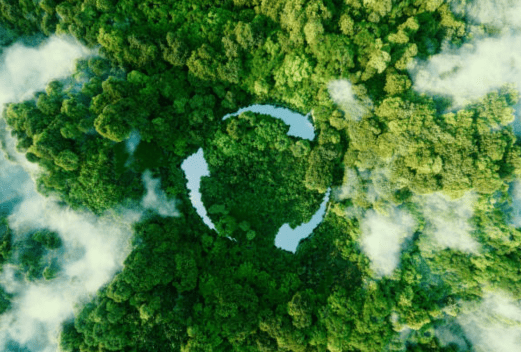
In an era where the battle against environmental pollution has become more crucial than ever, innovative technologies emerge as frontline warriors in this global fight. From revolutionary air purification systems to advanced water treatment processes, these technologies are not just mitigating the adverse effects of pollution but paving the way toward a cleaner, more sustainable future.
In this feature, we spotlight the trailblazing solutions and the visionary minds behind them, highlighting their pivotal role in transforming our world. Vikki Nicolai La Crosse, stands at the forefront of this technological revolution, demonstrating how ingenuity and commitment can lead to impactful environmental change.
Artificial Intelligence and Machine Learning
Artificial intelligence (AI) and machine learning are pivotal in effectively identifying and addressing pollution sources. AI-driven monitoring systems can process vast amounts of environmental data from satellites and ground-based sensors to detect pollution hotspots and trends over time. These technologies enable governments and environmental agencies to make informed decisions and implement targeted remediation efforts.
One example is the use of AI in predicting and managing air quality. Platforms like Plume Labs’ Air Report and IBM’s Green Horizons leverage AI to analyze weather patterns, traffic data, and industrial activity, providing accurate air quality forecasts and actionable insights to reduce exposure to harmful pollutants.
Blockchain for Waste Management
Blockchain technology, primarily recognized for its pivotal role in cryptocurrencies like Bitcoin and Ethereum, extends its innovative capabilities beyond financial transactions. It presents groundbreaking solutions for environmental sustainability, particularly in waste management and recycling sectors. By establishing transparent, immutable, and tamper-proof records, blockchain technology revolutionizes monitoring and recording waste generation and recycling processes.
This enhanced transparency ensures that all stakeholders, from companies to consumers, are held accountable for their environmental impact. Furthermore, it significantly improves waste handling by enabling better tracking and verifying recycled materials, thus encouraging more responsible waste management practices.
Internet of Things (IoT) for Pollution Control
The Internet of Things (IoT) refers to the network of physical objects embedded with sensors, software, and other technologies that connect and exchange data with other devices and systems over the Internet. In the context of pollution control, IoT devices can monitor environmental conditions in real-time and provide data to manage pollution more effectively.
Smart city initiatives often leverage IoT technology to create healthier urban environments. For instance, sensors deployed throughout a city can monitor air and water quality, noise levels, and radiation. This data can inform policies and practices to reduce pollution, such as adjusting traffic flow to minimize congestion and air pollution.
Bioremediation Technologies
Bioremediation detoxifies polluted environments by using living organisms like bacteria, fungi, and plants. These organisms naturally break down hazardous substances into less harmful forms, making bioremediation a sustainable and eco-friendly approach to pollution cleanup.
Phytoremediation, a subset of bioremediation, involves using plants to absorb, sequester, and degrade contaminants from soil and water. Not only is phytoremediation cost-effective, but it also rejuvenates the landscape, improving the ecological health of the remediated sites.
Solar-Powered Water Purification
Access to clean water is a global concern exacerbated by pollution. Solar-powered water purification systems present an innovative solution. They use solar energy to power filtration processes that remove contaminants from water, making it safe for consumption.
One such technology is solar stills, which use the sun’s energy to evaporate contaminated water, leaving pollutants behind. The vapor then condenses as clean water, ready for drinking. Solar-powered water purification systems are especially beneficial in remote and off-grid areas with scarce conventional energy sources.
Advanced Materials for Oil Spill Cleanup
Oil spills wreak havoc on marine ecosystems and coastal communities. Yet, breakthroughs in materials science have birthed superabsorbent materials capable of efficiently mitigating oil spills. According to Victoria Nicolai La Crosse, these innovative materials, including unique nanowire meshes and aerogels, are engineered to selectively absorb oil and repel water, enabling swift and effective cleanup efforts.
Researchers are also experimenting with graphene-based materials for oil spill remediation. Graphene’s unique properties, including its high surface area and hydrophobicity, make it an excellent candidate for capturing and removing oil from water.
Final Thoughts
As Victoria Nicolai notes, the relentless advance of pollution poses one of the most formidable challenges to global health and environmental sustainability. However, the innovations highlighted above offer a beacon of hope. They exemplify human ingenuity’s capability to confront and potentially reverse the damage wrought by pollution.
Each technology embodies a step toward a cleaner, healthier planet, from leveraging AI to forecast air quality and employing blockchain for waste management to harnessing the sun for water purification. Yet, the true success of these technologies depends on widespread adoption and integration into our daily lives, underscored by supportive policies and global cooperation, as Nicolai emphasized. The fight against pollution is a collective endeavor; we can envision a more sustainable future for generations to come through these cutting-edge solutions.



